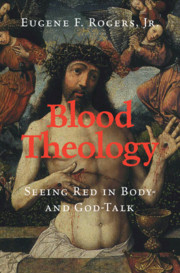Refine search
Actions for selected content:
35 results
Chapter 8 - On “The Poet”
-
- Book:
- Emerson, the Philosopher of Oppositions
- Published online:
- 20 November 2025
- Print publication:
- 31 December 2025, pp 152-164
-
- Chapter
- Export citation
Chapter 10 - Borders and the Liminal
- from Part II - Developments
-
-
- Book:
- Space and Literary Studies
- Published online:
- 07 May 2025
- Print publication:
- 22 May 2025, pp 172-185
-
- Chapter
- Export citation
Chapter 8 - Empire, Nation, and the Question of Space
- from Part II - Developments
-
-
- Book:
- Space and Literary Studies
- Published online:
- 07 May 2025
- Print publication:
- 22 May 2025, pp 140-155
-
- Chapter
- Export citation
Securing the Seas, Securing the State: The Inside/Outside of ‘Indo-Pacific’ Geopolitics
-
- Journal:
- Asia-Pacific Journal / Volume 19 / Issue 3 / February 2021
- Published online by Cambridge University Press:
- 14 March 2025, e4
-
- Article
-
- You have access
- Open access
- Export citation
The instantaneous structure of a turbulent wall-bounded flow influenced by freestream turbulence: streamwise evolution
-
- Journal:
- Journal of Fluid Mechanics / Volume 1005 / 25 February 2025
- Published online by Cambridge University Press:
- 17 February 2025, A2
-
- Article
-
- You have access
- Open access
- HTML
- Export citation
1 - Introduction
-
- Book:
- Tehran's Borderlines
- Published online:
- 30 January 2025
- Print publication:
- 06 February 2025, pp 1-18
-
- Chapter
- Export citation
7 - Conclusion
-
- Book:
- Tehran's Borderlines
- Published online:
- 30 January 2025
- Print publication:
- 06 February 2025, pp 111-117
-
- Chapter
- Export citation

Tehran's Borderlines
- Urban Development and Public Life in Contemporary Iran
-
- Published online:
- 30 January 2025
- Print publication:
- 06 February 2025
E - Strategist Should Make a Situation’s Natural Dynamics Work for Her
-
- Book:
- Three Faces of Sun Tzu
- Published online:
- 07 March 2024
- Print publication:
- 15 February 2024, pp 298-356
-
- Chapter
- Export citation
E - Strategist Should Make a Situation’s Natural Dynamics Work for Her
-
- Book:
- Three Faces of Sun Tzu
- Published online:
- 07 March 2024
- Print publication:
- 15 February 2024, pp 298-356
-
- Chapter
- Export citation
3 - Background on manifolds with (g–)corners
-
- Book:
- <i>C</i><sup>∞</sup>-Algebraic Geometry with Corners
- Published online:
- 05 January 2024
- Print publication:
- 04 January 2024, pp 50-72
-
- Chapter
- Export citation
6 - Boundaries, corners, and the corner functor
-
- Book:
- <i>C</i><sup>∞</sup>-Algebraic Geometry with Corners
- Published online:
- 05 January 2024
- Print publication:
- 04 January 2024, pp 137-166
-
- Chapter
- Export citation
Margulis–Ruelle inequality for general manifolds
- Part of
-
- Journal:
- Ergodic Theory and Dynamical Systems / Volume 42 / Issue 6 / June 2022
- Published online by Cambridge University Press:
- 22 April 2021, pp. 2064-2079
- Print publication:
- June 2022
-
- Article
- Export citation
1 - How Blood Marks the Bounds of the Christian Body
- from Part I - Why We See Red
-
- Book:
- Blood Theology
- Published online:
- 22 March 2021
- Print publication:
- 25 March 2021, pp 3-36
-
- Chapter
- Export citation

Blood Theology
- Seeing Red in Body- and God-Talk
-
- Published online:
- 22 March 2021
- Print publication:
- 25 March 2021
4 - The Double-Jointed Fly
- from Part II - Flies
-
- Book:
- Animal Anomalies
- Published online:
- 26 February 2021
- Print publication:
- 18 March 2021, pp 53-64
-
- Chapter
- Export citation
Chapter Two - Analysis of the Spatial Dynamics of State-Organised Societies
-
- Book:
- Power and Place in Etruria
- Published online:
- 29 September 2020
- Print publication:
- 08 October 2020, pp 24-54
-
- Chapter
- Export citation
Chapter Eight - Wave-Energy Converter Arrays
-
- Book:
- Ocean Waves and Oscillating Systems
- Published online:
- 12 May 2020
- Print publication:
- 28 May 2020, pp 262-292
-
- Chapter
- Export citation
Chapter Four - Gravity Waves on Water
-
- Book:
- Ocean Waves and Oscillating Systems
- Published online:
- 12 May 2020
- Print publication:
- 28 May 2020, pp 62-120
-
- Chapter
- Export citation
Conclusion
-
- Book:
- Empire on Edge
- Published online:
- 05 March 2020
- Print publication:
- 05 March 2020, pp 161-170
-
- Chapter
- Export citation
